10 Best Bedroom Plants For Cleaner Air And Better Sleep
10 Best Bedroom Plants For Cleaner Air And Better Sleep. Ensuring that your entire home is filled with clean air is really crucial. We should all make an effort to maintain an atmosphere that consistently encourages the use of clean and healthy air, especially in the bedroom, where we spend most of our time.
A simple method to enhance the air quality in your bedroom and other rooms is to bring some plants indoors. Any houseplant, according to most experts, including those at Cornell University, may improve air quality by breathing in air, filtering it, and then exhaling it. The plant will improve the interior environment as a whole if it is healthy and gets enough light, water, and nutrients to thrive. Keeping one or more of these plants in your bedroom can help purify the air there (10 Best Bedroom Plants For Cleaner Air And Better Sleep)
1. Areca Palm
 Large houseplants, such as areca palms, provide practical advantages beyond their aesthetic value. Because of their size, they are able to process and filter a greater volume of indoor air. One frequent indoor air pollutant that these plants may filter out is formaldehyde. Even in low quantities, this chemical can irritate a person’s eyes, nose, throat, and lungs, or even provoke an asthma attack, as stated by the California Air Resources Board. Prolonged exposure to formaldehyde can cause cancer.” The areca palm is wonderful to have in bedrooms that have just had newer carpets placed, as this increases the amount of formaldehyde. They may also provide some humidity to the air, but only if they are well-maintained.
Large houseplants, such as areca palms, provide practical advantages beyond their aesthetic value. Because of their size, they are able to process and filter a greater volume of indoor air. One frequent indoor air pollutant that these plants may filter out is formaldehyde. Even in low quantities, this chemical can irritate a person’s eyes, nose, throat, and lungs, or even provoke an asthma attack, as stated by the California Air Resources Board. Prolonged exposure to formaldehyde can cause cancer.” The areca palm is wonderful to have in bedrooms that have just had newer carpets placed, as this increases the amount of formaldehyde. They may also provide some humidity to the air, but only if they are well-maintained.
2. Boston Fern
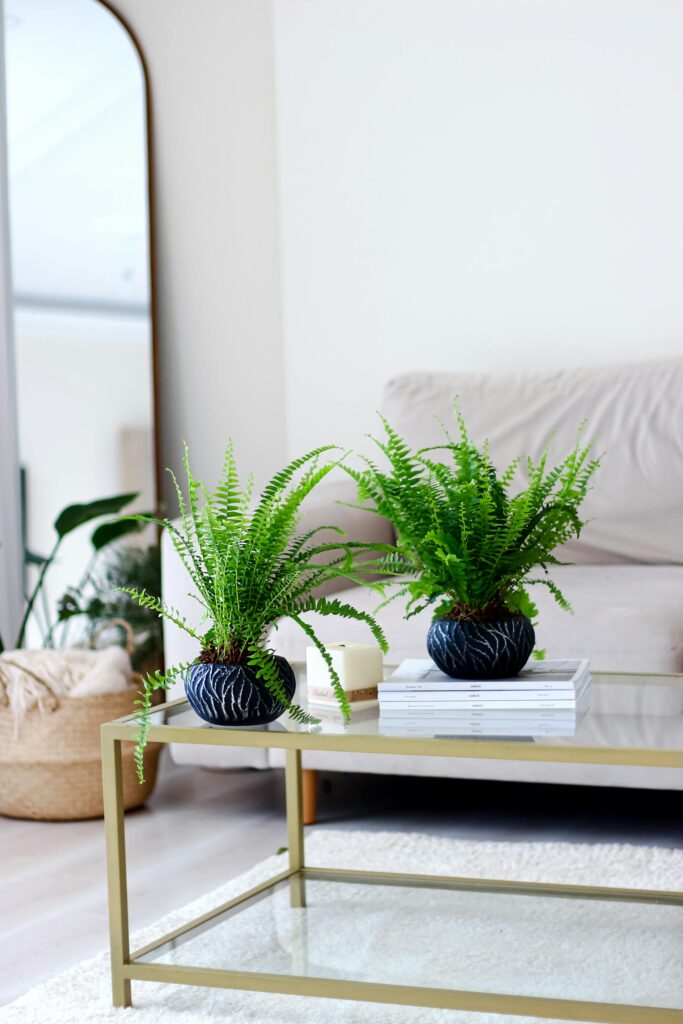 Boston ferns thrive in chilly, humid areas with indirect light and may grow astonishingly huge if given adequate space. They need to be wet and perform best with regular, thorough watering. If your home tends to be dry, they can help make your bedroom more humid at night with the added moisture in their soil. They also filter formaldehyde and xylene from the air, and if you’ve just performed any bedroom renovations, there is a greater possibility of these chemicals being present. According to the Agency for Toxic Substances and Disease Registry, “xylene is among the 30 most abundantly produced chemicals in the United States. This is derived mostly from crude petroleum. It is frequently used as a degreasing agent and as a thinner solvent in paints, inks, adhesives, and many other items. Fern is widely encountered as a solvent in pesticide products.” Boston ferns can help filter this poison out of bedrooms and minimize any discomfort caused by potentially breathing it.
Boston ferns thrive in chilly, humid areas with indirect light and may grow astonishingly huge if given adequate space. They need to be wet and perform best with regular, thorough watering. If your home tends to be dry, they can help make your bedroom more humid at night with the added moisture in their soil. They also filter formaldehyde and xylene from the air, and if you’ve just performed any bedroom renovations, there is a greater possibility of these chemicals being present. According to the Agency for Toxic Substances and Disease Registry, “xylene is among the 30 most abundantly produced chemicals in the United States. This is derived mostly from crude petroleum. It is frequently used as a degreasing agent and as a thinner solvent in paints, inks, adhesives, and many other items. Fern is widely encountered as a solvent in pesticide products.” Boston ferns can help filter this poison out of bedrooms and minimize any discomfort caused by potentially breathing it.
3. Bromeliad
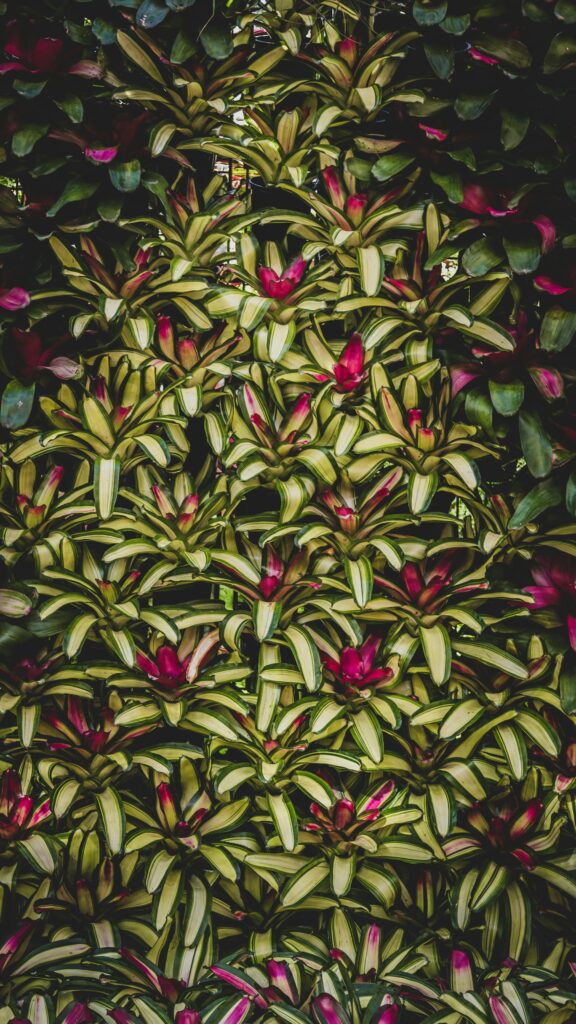 These amazingly vibrant plants are ideal to keep around, look lovely practically anywhere, and also help enhance air quality overall. They can flourish in low-lighting settings and require just modest water, making them perfect alternatives for a bedside table or dresser. Bromeliads emit oxygen exclusively at night as an adaptation to their local habitats, helping you sleep more peacefully. More oxygen promotes peaceful sleep, according to research from the University of Alberta, so adding a healthy bromeliad to your home may help you create a more snooze-worthy atmosphere.
These amazingly vibrant plants are ideal to keep around, look lovely practically anywhere, and also help enhance air quality overall. They can flourish in low-lighting settings and require just modest water, making them perfect alternatives for a bedside table or dresser. Bromeliads emit oxygen exclusively at night as an adaptation to their local habitats, helping you sleep more peacefully. More oxygen promotes peaceful sleep, according to research from the University of Alberta, so adding a healthy bromeliad to your home may help you create a more snooze-worthy atmosphere.
4. Dracaena
 There are many different species of Dracaena plants, and you may find them in varied sizes and color patterns. Some will grow to reach the ceiling, while others will remain smaller and more compact. Both are ideal for a bedroom. Their copious leaves absorb in the air and generate oxygen all day long, which is wonderful for keeping bedroom air clean and purified.
There are many different species of Dracaena plants, and you may find them in varied sizes and color patterns. Some will grow to reach the ceiling, while others will remain smaller and more compact. Both are ideal for a bedroom. Their copious leaves absorb in the air and generate oxygen all day long, which is wonderful for keeping bedroom air clean and purified.
5. Golden Pothos
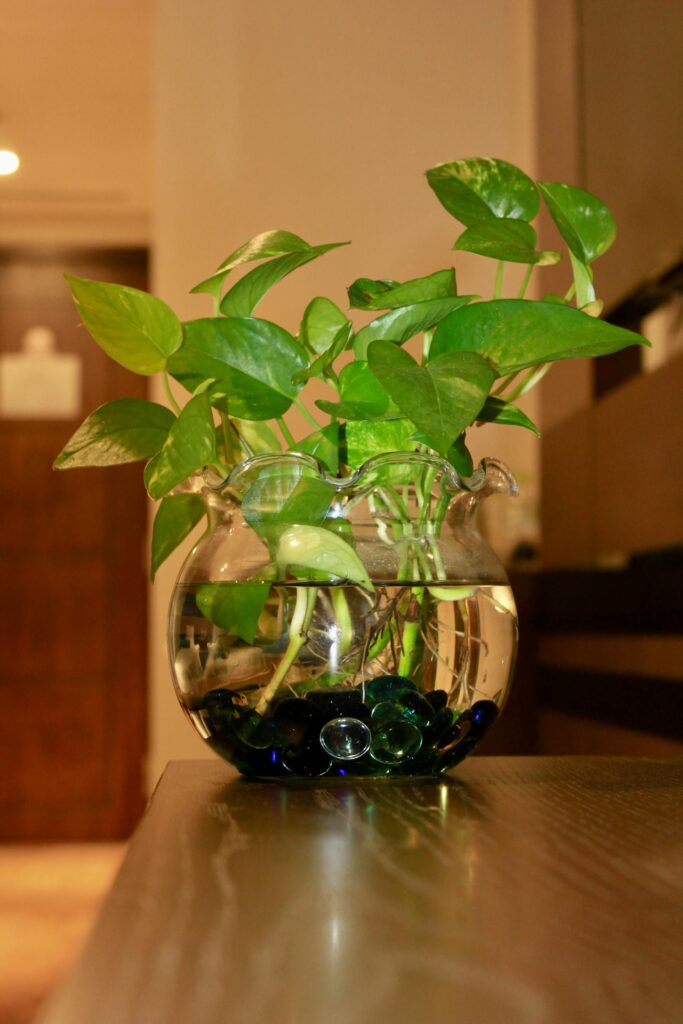 If you don’t have much of a green thumb, golden pothos are for you.Vining plants with thick leaves absorb atmospheric pollutants, reducing carbon monoxide and formaldehyde while releasing loads of oxygen. You can grow them virtually anywhere, and they look charming cascading out of a basket in front of a shaded window.
If you don’t have much of a green thumb, golden pothos are for you.Vining plants with thick leaves absorb atmospheric pollutants, reducing carbon monoxide and formaldehyde while releasing loads of oxygen. You can grow them virtually anywhere, and they look charming cascading out of a basket in front of a shaded window.
6. Peace Lily
 Peace lilies, despite their association with consolation presents, can enliven any house. These fast-growing, leafy plants not only offer beauty but also filter benzene, formaldehyde, and ammonia from the air.According to the CDC, “indoor air generally contains levels of benzene higher than those in outdoor air. The New York State Department of Health states that most individuals inhale ammonia gas or fumes, resulting in exposure. Ammonia’s inherent presence and incorporation in cleaning solutions offer two possible sources of exposure. Adding peace lilies to your home is an easy and lovely method to help rid harmful pollutants from the air in your bedroom and your house as a whole, keeping everyone inside safe. In addition to this, their moisture requirements will help make your environment more humid. Warning: If you have pets or children, however, you will need to be careful with these plants, as swallowing them is hazardous.
Peace lilies, despite their association with consolation presents, can enliven any house. These fast-growing, leafy plants not only offer beauty but also filter benzene, formaldehyde, and ammonia from the air.According to the CDC, “indoor air generally contains levels of benzene higher than those in outdoor air. The New York State Department of Health states that most individuals inhale ammonia gas or fumes, resulting in exposure. Ammonia’s inherent presence and incorporation in cleaning solutions offer two possible sources of exposure. Adding peace lilies to your home is an easy and lovely method to help rid harmful pollutants from the air in your bedroom and your house as a whole, keeping everyone inside safe. In addition to this, their moisture requirements will help make your environment more humid. Warning: If you have pets or children, however, you will need to be careful with these plants, as swallowing them is hazardous.
7. Philodendron
 Another easy-care vine, philodendrons come in a broad range of colors and sizes. They eliminate formaldehyde from the air and can handle practically any sort of lighting condition. Like pothos, all types look lovely spilling out of a jar, but your best choices for air-purifying are the heart-leaf and elephant-ear Philodendrons, owing to their higher potential to add more oxygen to the air, according to the University of Florida.
Another easy-care vine, philodendrons come in a broad range of colors and sizes. They eliminate formaldehyde from the air and can handle practically any sort of lighting condition. Like pothos, all types look lovely spilling out of a jar, but your best choices for air-purifying are the heart-leaf and elephant-ear Philodendrons, owing to their higher potential to add more oxygen to the air, according to the University of Florida.
You might also like- 10 Indoor Plants That Improve Air Quality and Boost Your Mood
8. Schlumbergera (also known as Christmas Cactus)
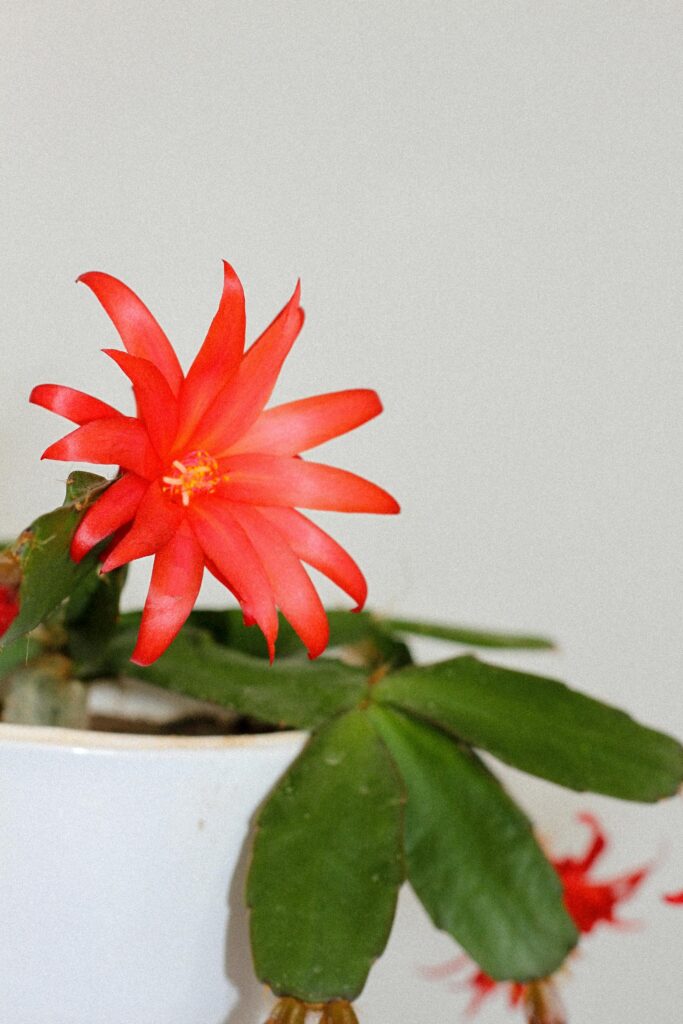 Native to tropical rainforests, Schlumbergera, commonly known as Christmas cactus, Easter cactus, zygocactus, and a number of other names, is an intriguing, trailing plant with jagged leaf segments. According to the University of Georgia Extension, despite what its name indicates, the Christmas cactus is not a cactus at all but is instead a succulent. When the evenings get longer and cooler, they will typically sprout buds on the terminal segments that mature into magnificent flowers. Not only are they gorgeous, but they survive many years, enhance overall air quality, and are tiny, often no more than 24 inches.
Native to tropical rainforests, Schlumbergera, commonly known as Christmas cactus, Easter cactus, zygocactus, and a number of other names, is an intriguing, trailing plant with jagged leaf segments. According to the University of Georgia Extension, despite what its name indicates, the Christmas cactus is not a cactus at all but is instead a succulent. When the evenings get longer and cooler, they will typically sprout buds on the terminal segments that mature into magnificent flowers. Not only are they gorgeous, but they survive many years, enhance overall air quality, and are tiny, often no more than 24 inches.
9. Snake Plant
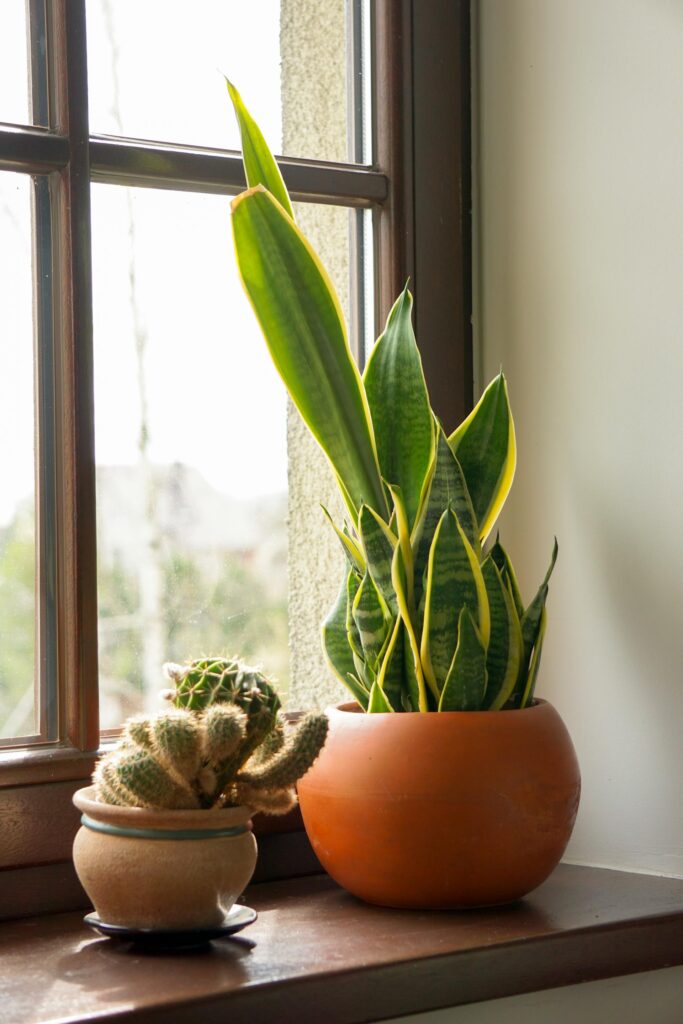 One of the toughest houseplants you’ll find, the snake plant, also known as mother-in-law’s tongue, may help filter formaldehyde, benzene, and other toxins typically found in bedrooms while creating oxygen from its large, stiff leaves. They don’t need much illumination and are quite forgiving of uneven watering schedules, making them an excellent choice for someone who may not be the greatest with indoor plants.
One of the toughest houseplants you’ll find, the snake plant, also known as mother-in-law’s tongue, may help filter formaldehyde, benzene, and other toxins typically found in bedrooms while creating oxygen from its large, stiff leaves. They don’t need much illumination and are quite forgiving of uneven watering schedules, making them an excellent choice for someone who may not be the greatest with indoor plants.
10. Spider Plant
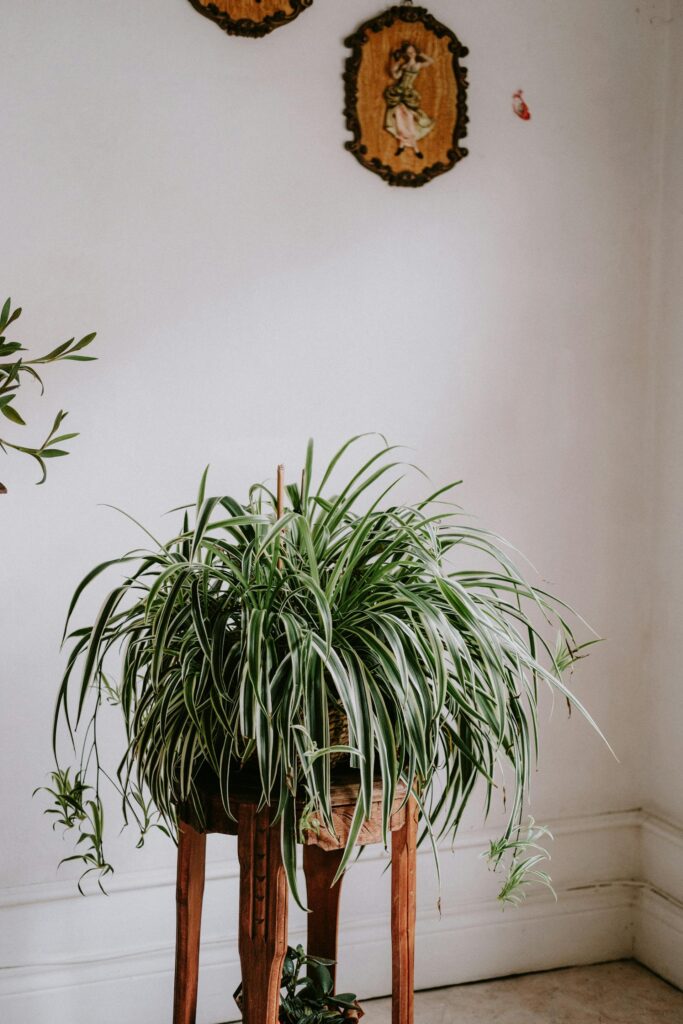 If you pick just one plant to build an army with, choose the spider plant. This green plant yields plentiful foliage and, when root-bound, sends forth branches that contain young plants ready to start their own lives. Together, your plant army can filter formaldehyde, benzene, and xylene from the air while instantly producing a low-fuss jungle habitat.10 Best Bedroom Plants For Cleaner Air And Better Sleep. I recommend checking out:
If you pick just one plant to build an army with, choose the spider plant. This green plant yields plentiful foliage and, when root-bound, sends forth branches that contain young plants ready to start their own lives. Together, your plant army can filter formaldehyde, benzene, and xylene from the air while instantly producing a low-fuss jungle habitat.10 Best Bedroom Plants For Cleaner Air And Better Sleep. I recommend checking out:
Last Updated on 1 year ago by Anjali Mehra Ph.D. in Horticulture (Punjab Agricultural University)
- Why Lawn Grass Fails After Installation (Real Indian Case Studies) - December 25, 2025
- Nilgiri Grass vs Korean Grass – Price, Look & Maintenance Compared - December 23, 2025
- Delhi Pollution & Dust-Proof Lawn Care Guide - December 20, 2025
